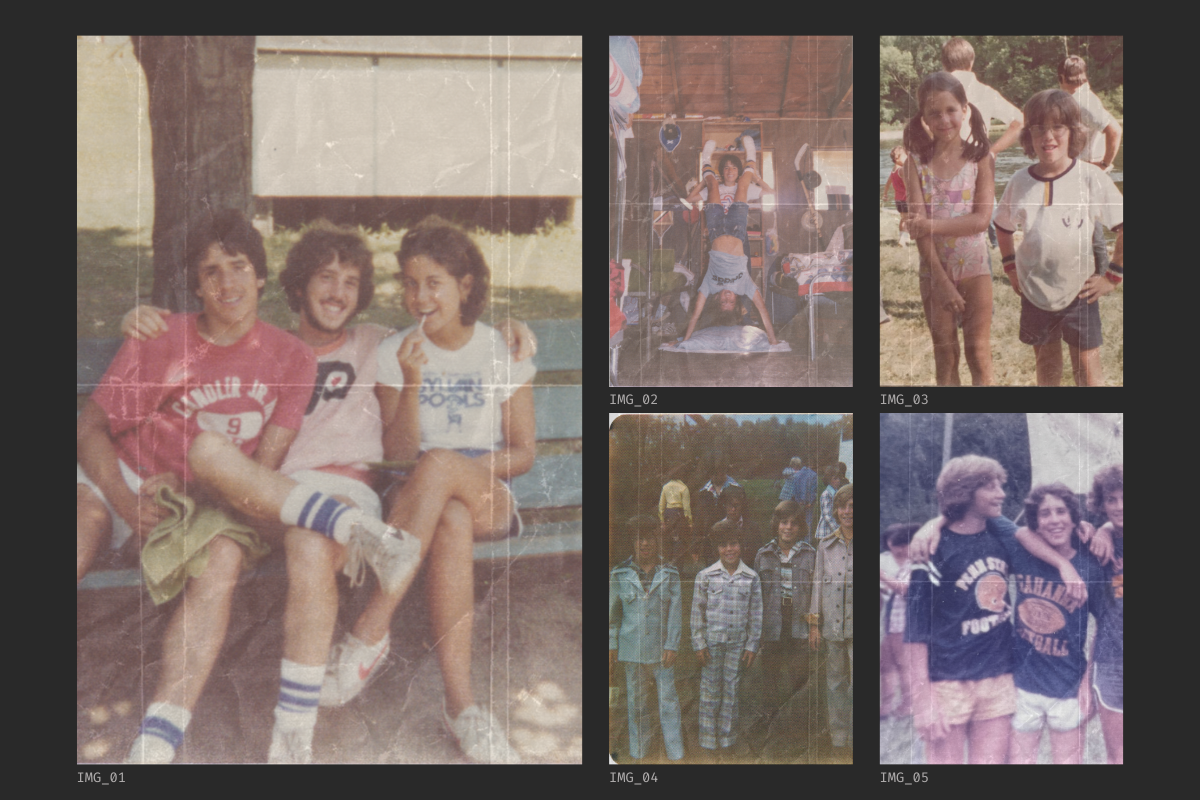I haven’t gone to sleepaway camp in over 40 years. And I still miss it.
The roots of Jewish sleepaway camp run deep in my family. My parents met and began dating at Camp Nock-a-Mixon when they were teenagers in the late 1950s. In 1974, when I was 11 years old, I was lucky enough to start going to that very same camp. I immediately became that kid who lived his life “10 months for two,” suffering through the interminable school year just so I could get to those eight magical weeks away at camp. I went for 10 summers (five as a camper, two as a waiter and three as a counselor) and I would have kept going, but following my junior year of college I was told that I needed to do a summer internship in my future field of employment in preparation for entering the “real world” after graduation. So I did. No more camp for me.
However, throughout my adult life, as the weather turned warm, I could feel the pull of my summer home and I would find myself still missing camp. When our three children were old enough to go, my wife and I sent them to the camp I went to. As the bus to camp pulled away from the Bloomingdale’s White Plains’ parking lot, all of the parents around me waved goodbye, barely able to contain their excitement to be free for the summer. I remember just standing there feeling incredibly jealous of my kids. Sure I was happy for them, but I wished that I was going, too.
I quickly learned that as parents of campers, we had access to a website where the goings-on at camp are captured by the camp photographer and uploaded daily. Every day of the summer, I visited this site, scrolling through dozens and dozens of tiny little thumbnails to find images of my kids. More often than not I would find a couple of pictures of their tan faces happily beaming at me from the computer screen, but even when I didn’t see them, I was completely engrossed in being able to watch the arc of the summer unfold before my eyes in pictures — and I was thrilled that not much had changed since I had been there.
Back in my day, photos of our summers were captured in a much different manner. Like many kids, I brought with me to camp a Kodak Instamatic camera loaded with a single 24-exposure film cartridge. With this very basic point-and-shoot camera, I took random pictures in our cabin and around camp throughout the summer (while always saving a couple of shots for the big Cabaret Dance and the lake ceremony that closed out the summer). Upon my return home, I would bring the cartridge to the Fotomat kiosk which stood in the middle of the parking lot of a strip mall by the Sam Goody’s Record store. Twenty-four hours later, I would return to pick up an envelope with the developed photos inside and finally get to see the pictures I took.
Seeing pictures of my kids at camp online inevitably sent me to the back room of our basement to dig through a box where I keep those Fotomat envelopes of pictures. Inside those envelopes (which had “ENJOY YOUR MEMORIES!” printed on them) were photos of me from the ages of 11 to 20, hanging out with bunkmates, counselors and summer girlfriends. I loved looking at these pictures and I began to wonder about the pictures that others might have from summers past.
I decided to create a Facebook group for the alumni of my camp. Soon ex-campers from multiple generations were sharing pictures that they had with me. One of my best friends uncovered a sizable collection of Polaroid pictures. My brother found an old ziplock bag with several dozen classic square Kodak prints. Some people shared photos that had been stuck under a film of plastic in old yellowed albums for years. Some shared collages of cut-out pictures hermetically sealed in those boxy plastic frames. Some shared pictures from the flimsy yearbooks (printed on stock paper and held together with a couple of staples) which we used to be given each fall at the camp reunion. The love for Camp Nock-a-Mixon that people in the group expressed was incredible! And it made me realize that I wasn’t the only alter kaker still obsessed with sleepaway camp (though I may be one of the few to go on to write a graphic novel about it).
The idea that every moment today can be so easily captured and perfectly edited as high-definition images on our phones, then uploaded to social media for the world to see, is nothing short of incredible. But there is something magical about these old camp pictures: the willy-nilly manner in which they were shot, the fact that some are blurry, poorly composed, too dark, or faded, as well as their precious scarcity. It gives them all a beautiful transcendent quality that, I’ve come to realize, mirrors the way camp feels in the memories of my mind.








